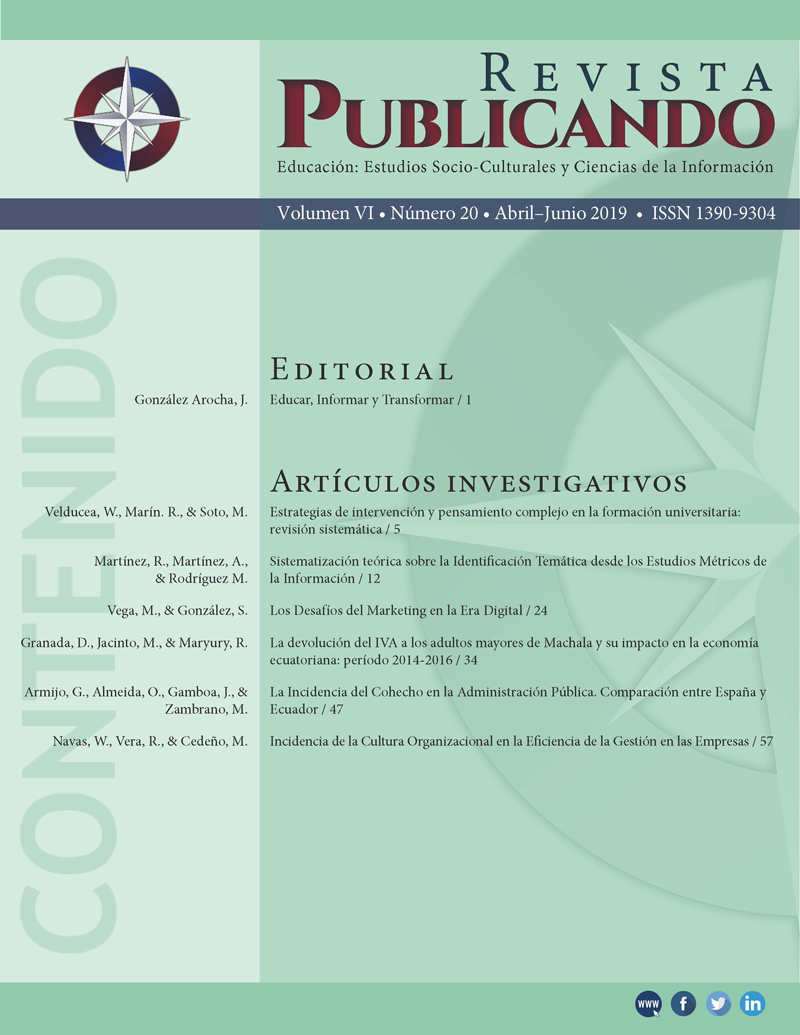Resumen
El propósito de esta investigación fue clasificar las dimensiones de la Tecnología de la Información (TI) utilizando criterios de desarrollo sostenible. La presente investigación pertenece a la categoría de investigación aplicada en términos de encuesta objetiva y descriptiva en términos de recolección de datos. Con este fin, las seis dimensiones de TI se han clasificado de acuerdo con tres áreas de desarrollo sostenible. Las clasificaciones se realizaron utilizando el Análisis relacional de Gray (GRA) a través del software GRAY RELATION. Vale la pena señalar que la población estadística incluyó a todos los gerentes de organizaciones ejecutivas en las provincias del noroeste de Irán. El resultado de utilizar la metodología GRA para clasificar los componentes de TI a través de dimensiones de desarrollo sostenible ha clasificado las seis dimensiones en términos de puntajes obtenidos de la siguiente manera: calidad del servicio, calidad de la información, satisfacción del sistema, beneficios percibidos, calidad del sistema y uso de TI.
Referencias
Azizi, Bishtun; Mehrabi Kushki Ali and Jalali Farahani Majid. (2013). Investigating the relationship between information technology and organizational structure in the Ministry of Sport and Youth of Islamic Republic of Iran. Journal of Sports Management; 5 (3): 161- 174
Bridges. (2005), E-readings Assessment Tools Comparison, Cape Town: Bridges.
Diaz-Chao, Angel. Sainz-Gonzalez, Jorge. & Torrent-Sellens, Joan (2015). ICT, innovation, and firm productivity: New evidence from small local firms, Journal of Business Research, pp.1-6
Falch, Morten (2015). The impact of ICT on market organisation – A case of 3D-models in engineering consultancy, Telematics and Informatics, Vol. 31, pp. 282–291.
Jin, Sangki. & Moon Cho, Cheong (2015). Is ICT a new essential for national economic growth in an information society? Government Information Quarterly, pp 1- 8.
Melian-Gonzalez, Santiago. & Bulchand-Gidumal, Jacques (2016). A model that connects information technology and hotel performance, Tourism Management, Vol.53, pp 30-37.
Mohammadi, Ali and Amiri, Yaser. (2013). Identifying and Explaining the Factors Affecting the Adoption of Information Technology Innovation in Government Organizations with the Structural Equation Modeling Approach. Information Technology Management; 5 (4): 195- 218
Mojtahedi, Mahsa and Litkohi, Sanaz. (2014). Promoting sustainable development of Khoy city with emphasis on the role of cultural tourism in the Tomb of Shams-e Tabrizi. Master's Thesis at Payame Noor University, Tehran-Center, Department of Architecture and Urban Development.
Moradi Mofrad, Samira, Hossein Zadeh, Akbar and Cheraghi, Mehdi. (2014). An Analysis of ICT Effects on Sustainable Urban Development (Case Study: Zanjan City). Urban Ecology Research; 5(1)-9: 71-82
Mowahedi, Fatemeh. (2008). Quantitative Indicators of Iranian Technology and Position in International Comparisons. Journal of Economic Research Collection, No. 33: 1-89.
Mutual, S. et al (2006) An evaluation of e-readiness assessment tools with respect to information access: Towards an integrated information rich tool. International Journal of TN formation Management, PP. 212-223.
Pourahmad, Ahmad, Mohammadpour, Saber and Buchani, Mohammad Hussein. (2010). Investigating the Concept of Citizen Participation in Electronic City, Journal of Human Geography Research Quarterly; 2 (4):105-117
Rahmanpur, Hassan and Hajebi, Sedigheh. (2013). New Technologies and Sustainable Urban Development Patterns and Indicators. First Conference on Architectural and Sustainable Urban Spaces, Parman Applied Research Group.
Sarabandi, Mohsen, Kurd, Bagher, Salar Zehi, Habibollah. (2011). Investigating and identifying the impact of applying IT dimensions on the excellence of small and medium industries, Master's Thesis in Information Technology, Sistan and Baluchestan University
Sohrabi, Morteza and Kiakojouri, Karim (2016) The Role of Information Technology Dimensions in Improving Organizational Performance, Master's Thesis, Islamic Azad University, Anzali Branch
Usted es libre de:
Compartir — copiar y redistribuir el material en cualquier medio o formato
Adaptar — remezclar, transformar y construir a partir del material
La licenciante no puede revocar estas libertades en tanto usted siga los términos de la licencia
Bajo los siguientes términos:
Atribución — Usted debe dar crédito de manera adecuada, brindar un enlace a la licencia, e indicar si se han realizado cambios. Puede hacerlo en cualquier forma razonable, pero no de forma tal que sugiera que usted o su uso tienen el apoyo de la licenciante.
NoComercial — Usted no puede hacer uso del material con propósitos comerciales.
CompartirIgual — Si remezcla, transforma o crea a partir del material, debe distribuir su contribución bajo la lamisma licencia del original.
